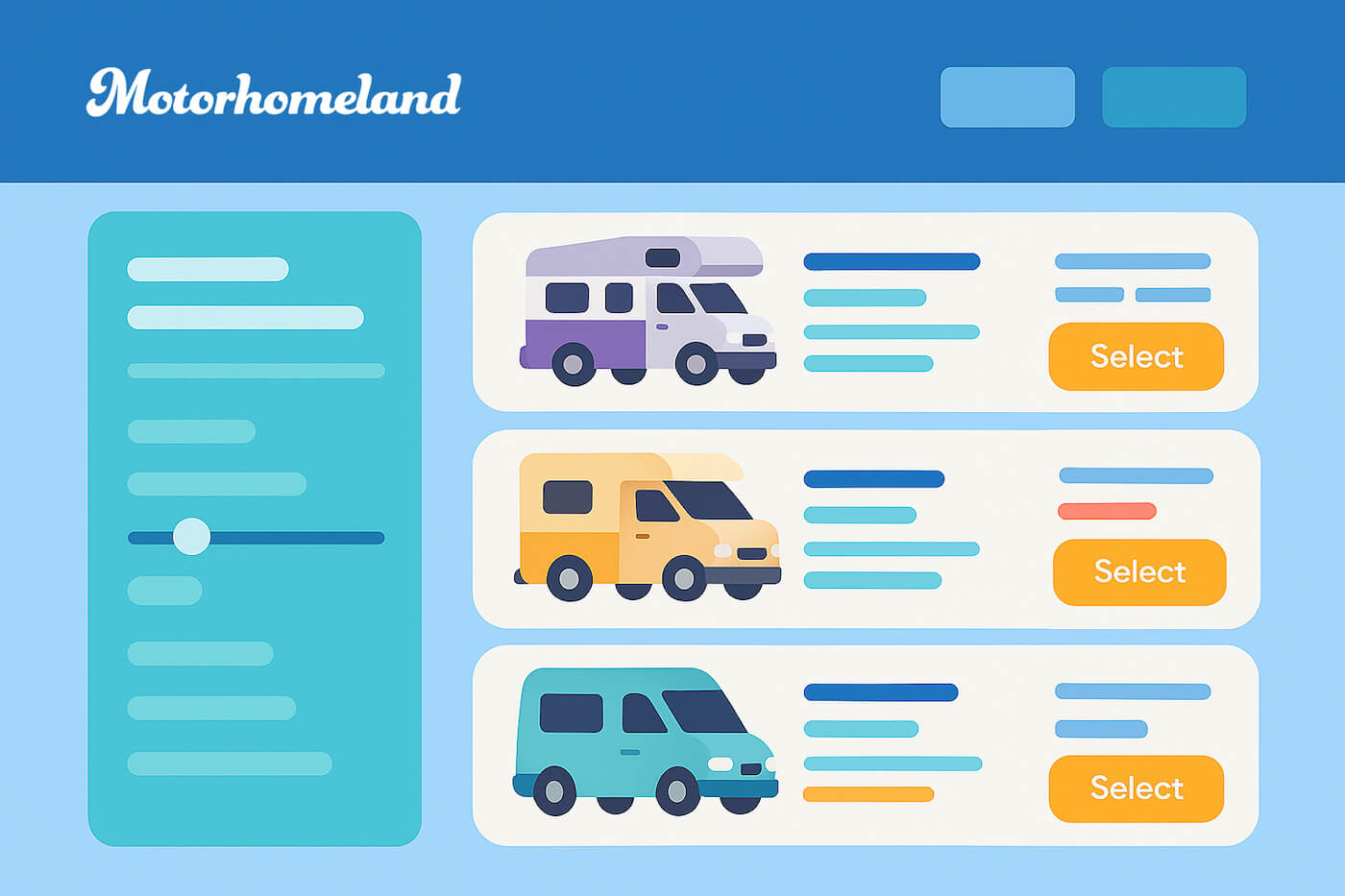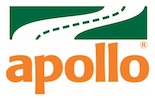Campervanning in Scotland: Best Itineraries, Tips & Essential Advice

Scotland is a land of rugged mountains, enchanting lochs, and timeless castles. Exploring this country behind the wheel of a campervan or motorhome adds a special dose of freedom and comfort: you carry your own “home on wheels,” ready to stop whenever and wherever you please. As you watch sunrises in remote valleys or savor fish and chips by the coast, you’ll see why many travelers consider this one of the most flexible and immersive ways to experience Scotland.
Whether you crave dramatic landscapes or historic highlights, this guide aims to help you plan a Scottish campervan adventure that suits your style. We’ll cover reasons to explore Scotland by camper, rental tips, suggested itineraries, and essential advice on driving, overnight stays, and when to visit. Ready to roll?
TABLE OF CONTENTS
- 1. Why Explore Scotland in a Campervan?
- 2. Renting a Campervan or motorhome in Scotland
- 3. Top Campervan Road Trips in Scotland
- 4. More Campervan Routes Across Scotland
- 5. Where to Stay Overnight
- 6. Driving a Campervan and Motorhome in Scotland: Key Tips
- 7. Must-See Destinations for Campervan Travel
- 8. Best Time to Visit Scotland in a Campervan
- 9. Budget & Costs for Your Campervan Adventure
- 10. Practical Tips to Make the Most of Your Trip
- 11. Frequently Asked Questions (FAQs)
1. Why Explore Scotland in a Campervan?

Scotland’s spectacular blend of towering peaks, shimmering lochs, and hidden coastal treasures makes it an iconic destination for travelers seeking both nature and history. A campervan adds another layer of excitement: rather than booking hotels or rushing from one spot to another, you have the freedom to immerse yourself in each locale at your own pace.
Highland roads and scenic byways are particularly well-suited to campervans or motorhomes. You can park in areas with breathtaking views, cook your breakfast overlooking a misty glen, and carry on whenever you feel ready. This sense of autonomy turns road travel into part of the adventure. Furthermore, many of Scotland’s top highlights—such as Isle of Skye’s rugged Trotternish Ridge or Glencoe’s dramatic valleys—lie away from major urban centers. Having your own mobile “base camp” ensures no time is wasted on repeated check-ins or packing. Finally, traveling by campervan offers a cozy combination of indoor comfort and direct contact with the elements, whether you’re sipping hot tea amid a drizzle or chasing that perfect sunset along the coastline.
2. Renting a Campervan or Motorhome in Scotland

2.1 The current rental scene: where, who and how much?
Scotland hosts more than thirty professional rental firms, from big fleets to family outfits, and most operate around Edinburgh, Glasgow and Perth. This cluster means you can land at either capital city and be collecting keys within an hour. Up north, Inverness is the usual pick-up for the Highlands and the North Coast 500.
Expect low-season prices (Nov–Mar) from about £95/day for a two-berth camper up to £160/day for a luxury motorhome. In July–August those same vehicles can jump to £185–£300/day. Booking three to six months ahead secures the best rates, especially if you want automatic transmission or intend to cross to the islands on busy ferry routes.
2.2 Booking through our comparator – quick, easy & cheaper
If comparing each supplier manually sounds daunting, simply run your dates through our booking tool. In seconds you’ll see real-time availability and transparent prices from every firm mentioned above – plus several more. We negotiate exclusive discounts, apply no hidden fees and often undercut the suppliers’ own websites. When you spot the perfect van, you can complete the reservation, add extras and receive confirmation without leaving our page.
Want a single page that shows live availability, prices and depot options for Edinburgh and Glasgow (and beyond)? Check our Scotland campervan hire page.
2.3 Seasons, tariffs and what you really pay
Rental rates move with demand, ferry timetables and even the infamous midges. Below are the standard seasons used by most Scottish providers and typical prices for a four-berth vehicle with shower and WC.
- Low season – November to March: quiet roads, short days, many campsites closed.
- Shoulder season – April to mid-June & September to mid-October: long daylight, fewer crowds.
- High season – mid-June to August: festivals, school holidays, full daylight in the Highlands.
| Vehicle size | Low Season (£/day) |
Shoulder (£/day) |
High Season (£/day) |
|---|---|---|---|
| 2-berth VW Camper | 95 – 120 | 130 – 160 | 170 – 200 |
| 4-berth Panel-van | 110 – 145 | 150 – 185 | 190 – 245 |
| 6-berth Coachbuilt | 130 – 170 | 175 – 220 | 220 – 300 |
Extras add up quickly: additional driver (~£10/day), bedding (~£25/person per hire), bike rack (~£45 total) and excess-reduction insurance (~£30/day). Before entering card details, add the extras you actually need and recalculate – that is the true cost.
3. Top Campervan Road Trips in Scotland
3.1 - Highlands & Isle of Skye (7 Days)

- Itinerary: Edinburgh > Stirling > Glencoe > Fort William > Isle of Skye > Loch Ness > Inverness > Edinburgh
- Suggested Duration: 7 days
- Total Distance: Approximately 800 km
- Best Travel Season: Late Spring or Early Autumn
- Key Highlights: Stirling Castle, Glencoe’s mountain scenery, Old Man of Storr, Loch Ness
With just a week at your disposal, this route showcases some of Scotland’s most renowned vistas. Kick off in the captivating capital of Edinburgh, then drive toward the Highland gateway of Stirling. From there, weave into Glencoe’s imposing valleys and stand at the foot of Ben Nevis in Fort William. You’ll eventually cross to the scenic Isle of Skye, famed for dramatic rock formations and sweeping shorelines. A loop through Loch Ness and Inverness brings you back to Edinburgh, ensuring a balanced dose of cities, castles, and sublime nature.
Day 1 - Edinburgh
- Stroll the Royal Mile and discover Edinburgh Castle perched on volcanic rock.
- Marvel at panoramas from Calton Hill or Arthur’s Seat, depending on your energy level.
- Gather supplies in a nearby supermarket before settling into a campsite on the city’s outskirts.
Day 2 - Stirling & Loch Lomond
- Drive about an hour to Stirling to see Stirling Castle and the Wallace Monument.
- Head west to Loch Lomond & The Trossachs National Park, known for tranquil shores and hiking paths.
- Overnight in a lakeside campsite, soaking up the calm evening with waterside views.
Day 3 - Glencoe & Fort William
- Venture through the stunning Glencoe valley, famed for its craggy peaks and storied past.
- Stop for short walks or photo ops at the mesmerizing “Three Sisters” viewpoint.
- In the afternoon, continue to Fort William at the foot of Ben Nevis. Decide if you’d like to hike the mountain or simply enjoy the area’s pubs.
Day 4 - Isle of Skye (Arrival)
- Depart Fort William early, optionally seeing Glenfinnan Viaduct en route.
- Stop by Eilean Donan Castle for iconic panoramas before heading onto Skye via the bridge.
- Base yourself near Portree or Broadford, taking time to admire the island’s rugged coast.
Day 5 - Isle of Skye (Exploration)
- Drive the Trotternish Peninsula, stopping to hike at the Old Man of Storr or the Quiraing.
- Photograph Kilt Rock and its waterfall cascading over sheer cliffs.
- Conclude with a stroll around Portree’s quaint harbor, then overnight at a local campsite such as Camping Skye.
Day 6 - Loch Ness & Inverness
- Return to the mainland and travel east toward the legendary Loch Ness.
- Visit the ruins of Urquhart Castle for a sweeping lake view (keep an eye out for ‘Nessie’!).
- Arrive in Inverness, the Highlands’ capital, explore the riverside, and settle into a convenient site.
Day 7 - Return to Edinburgh
- Take the A9 through the Cairngorms or route via Pitlochry. If desired, stop at a distillery for a genuine whisky tasting.
- Continue on to Edinburgh, returning your campervan or finding a final night’s campsite.
- Wrap up your journey with final sightseeing and a well-deserved rest before departure.
3.2 - North Coast 500 (10 Days)

- Itinerary: Inverness > John o’Groats > Durness > Ullapool > Torridon > Applecross > Inverness
- Suggested Duration: 10 days
- Total Distance: Around 830 km
- Best Travel Season: Late Spring to Early Autumn
- Key Highlights: Dramatic coastlines, quiet beaches, rugged mountain scenery, wildlife encounters
The North Coast 500 is often described as Scotland’s answer to Route 66. This circular drive begins and ends in Inverness, looping around the northern Highlands via untamed coastlines and small fishing towns. You’ll witness remote beaches with turquoise waters, looming cliffs that host seabird colonies, and single-track roads flanked by passing places. Expect a slower pace of driving due to narrow routes but endless visual rewards—from farmland dotted with sheep to towering sea stacks at Duncansby Head.
Day 1 - Inverness & Black Isle
- Discover Inverness, a welcoming city on the River Ness. Stock up on groceries for your trip.
- Cross the Kessock Bridge to explore the Black Isle. Chanonry Point is a prime spot for dolphin sightings.
- Overnight near Fortrose or Cromarty, enjoying quiet coastal views.
Day 2 - Heading North via Tain & Dornoch
- Begin the official NC500 by traveling up the A9. Stop in Tain to see local distilleries or in pretty Dornoch for a classic Highland town vibe.
- Visit Dunrobin Castle, famous for its French-style turrets and clifftop gardens.
- End the day near Wick or further north, depending on your pace and campsite preference.
Day 3 - John o’Groats & Duncansby Head
- Reach John o’Groats, the well-known marker at Scotland’s northeastern tip.
- Walk or short-hike to Duncansby Head for spectacular sea stacks rising from the North Sea.
- Continue westward to Dunnet Bay, where you can overnight at Sango Sands Oasis if you wish to push further (though Sango is near Durness). Otherwise, Dunnet area also has scenic spots.
Day 4 - Thurso to Durness
- Embrace the quiet, winding roads along the northern coastline, passing villages like Bettyhill with broad sandy bays.
- Pause in Tongue to admire mountain silhouettes (Ben Loyal, Ben Hope) across the estuary.
- Arrive at Durness, home to Smoo Cave and dramatic cliffs. Pitch up at Sango Sands for impressive views above the beach.
Day 5 - Durness & Cape Wrath (Optional)
- Take a minibus/ferry combo to Cape Wrath if weather allows, glimpsing one of the UK’s most remote lighthouses.
- If you prefer a slower day, explore Balnakeil Beach or check out local arts and crafts in Durness.
- Retire for a second night near Durness or move south if time permits.
Day 6 - West Coast to Ullapool
- Drive narrow single-track roads and pass Ardvreck Castle perched on Loch Assynt.
- Stop at Kylesku Bridge for spectacular seascapes, then proceed through the rugged wilderness of Assynt to Ullapool.
- Enjoy the fishing-town vibe in Ullapool and rest in a waterfront campsite or holiday park.
Day 7 - Wester Ross & Torridon
- Explore the route toward Torridon, passing Corrieshalloch Gorge for a short walk over a dramatic canyon.
- Inverewe Garden is a renowned botanical spot if you like flora in a surprisingly mild coastal climate.
- End the day near Shieldaig or Kinlochewe, surrounded by towering mountains and lochs.
Day 8 - Applecross via Bealach na Bà
- Negotiate the windy switchbacks of Bealach na Bà, a historic pass reaching over 600m in altitude.
- Arrive in the tiny coastal village of Applecross, famed for scenery and fresh seafood at the local pub.
- Settle in Applecross Campsite or a similarly peaceful spot, enjoying a restful evening in this remote area.
Day 9 - Lochcarron & Eilean Donan Castle
- Head east, pausing in Lochcarron or Plockton, a village recognized for waterfront views and occasional palm trees.
- Optionally visit Eilean Donan Castle, one of Scotland’s most photographed fortresses.
- Drive back toward Inverness via scenic routes, stopping as desired for pictures or short hikes.
Day 10 - Return to Inverness
- Complete the North Coast 500 loop upon reaching Inverness.
- Use the final day to explore Culloden Battlefield or Clava Cairns’s prehistoric stones.
- Hand back your campervan and celebrate a memorable circuit of Scotland’s north coast.
3.3 - Western Coast & Isles (7 Days)

- Itinerary: Glasgow > Loch Lomond > Oban > Outer Hebrides (South Uist, Harris, Lewis) > Ullapool > Isle of Skye > Fort William > Glasgow
- Suggested Duration: 7 days
- Total Distance: Roughly 900 km (plus ferry crossings)
- Best Travel Season: Summer or Early Autumn
- Key Highlights: Coastal ferries, white-sand beaches, Gaelic culture, Isle of Skye landmarks
This itinerary focuses on Scotland’s western shores, blending mainland attractions with an island-hopping twist. After savoring the scenic route around Loch Lomond, you’ll ferry from Oban to the outer isles, encountering quiet moors and stunning beaches. A crossing from Stornoway to Ullapool returns you to the mainland, culminating with a Skye visit and a final stretch past Fort William.
Day 1 - Glasgow to Oban
- Depart Glasgow, passing along Loch Lomond’s tranquil shores.
- Stop in Inveraray to see the historic castle or try local seafood along the way.
- Arrive in Oban, known for its bustling harbor and fresh catch. Board an evening ferry to South Uist or stay overnight if schedules require.
Day 2 - South Uist & Benbecula
- Experience the island vibe: roads flanked by rolling pasture and countless small lochs.
- Visit local heritage sites or walk on deserted beaches. Marvel at expansive sands often shared with free-roaming cows.
- Continue north via causeways to Benbecula, camping near a small municipal site or village store, savoring the remote atmosphere.
Day 3 - North Uist to Harris
- Explore rugged North Uist, stopping at Balranald Nature Reserve for birdwatching and windblown dunes.
- Catch a ferry from Berneray to Leverburgh, on the Isle of Harris.
- Camp near Horgabost or Luskentyre Beach, famed for its turquoise waters and golden sand.
Day 4 - Isle of Harris & Lewis
- Enjoy Harris’s dramatic contrasts: rocky hills in the east, Caribbean-like beaches in the west.
- Continue north into Lewis, visiting the ancient Callanish Standing Stones or the restored blackhouse village at Gearrannan.
- Overnight near Stornoway, preparing for tomorrow’s ferry to the mainland.
Day 5 - Ferry to Ullapool & Wester Ross
- Take the morning ferry from Stornoway to Ullapool (approx. 2h 45min) and scan the waves for dolphins.
- Explore Ullapool’s maritime charm, then travel south through Wester Ross, stopping at scenic lookouts.
- Set camp near Torridon or Kinlochewe for a night among imposing Highland backdrops.
Day 6 - Isle of Skye
- Drive west to reach the Skye Bridge near Kyle of Lochalsh (or alternatively catch the Mallaig-Armadale ferry if you prefer a different approach).
- Spend the afternoon at Trotternish, checking out Quiraing or Old Man of Storr. Soak in the island’s mystical ambiance.
- Overnight at one of Skye’s well-equipped campgrounds, such as Camping Skye.
Day 7 - Skye to Fort William & Glasgow
- Return by crossing Skye’s southern tip or back over the main bridge, linking up to the “Road to the Isles” or the A87.
- Pause at Fort William for final Highland memories, maybe glimpsing the Glenfinnan Viaduct if time allows.
- Finish your trip heading to Glasgow. Return your campervan or find a campsite for an extra night’s rest.
4. More Campervan Routes Across Scotland

- South West Coastal 300 (SWC300). Spanning around 300 miles in Dumfries & Galloway and Ayrshire, this loop offers quiet harbors, forest parks, and scenic farmland. You’ll pass sights such as Sweetheart Abbey, Galloway Forest Park’s “Dark Sky” region, and dramatic coastal cliffs near Portpatrick. SWC300 is ideal for travelers seeking peaceful camp spots and lesser-known corners of rural Scotland. Plan about four or five days for a relaxed pace.
- Northeast 250 (NE250). Focused on Speyside and Aberdeenshire, the NE250 covers whisky country and castle-laden roads. Distilleries like Glenfiddich or Macallan line the route, and the coastline is dotted with small fishing villages. You can enjoy scenic beaches near Cullen, the city vibe in Aberdeen, and ample stops for castle visits at places like Dunnottar or Crathes. Five or six days generally allows time to enjoy its cultural variety.
- Isle of Mull & Argyll. For an island off the beaten path, Mull is notable for its colorful waterfront town of Tobermory, tranquil coastline, and day trips to Iona or Staffa. Heading west from Oban, you’ll discover a slower pace, local craft shops, and mountainous scenery often overlooked. Combine this with the remote Ardnamurchan Peninsula or even slip in a short hop to nearby isles if you’re flexible.
5. Where to Stay Overnight

Scotland provides considerable flexibility for campervan overnights, though it’s crucial to understand the relevant guidelines. Roadside parking and “wild camping” with vehicles can be a gray area in certain places, as the famous Scottish Outdoor Access Code primarily addresses walkers and traditional tent camping. For campervans or motorhomes, the core rule is to avoid causing damage, follow signs, and respect private property or restricted zones.
5.1 - Campgrounds and Caravan Parks
Campgrounds are plentiful, ranging from busy sites with full facilities to small, rustic spots on farmland. Rates typically range from £15 to £30 per vehicle per night, depending on amenities. Many are open from April through October, with some well-known options like Glen Nevis Camping Park in Fort William or Sango Sands in Durness. The Camping and Caravanning Club also lists numerous sites nationwide, often with electric hookups, laundry, and spotless shower blocks. Booking in high season is wise, especially near top tourist hotspots such as Skye or Glencoe.
5.2 - Legislation and Responsible Overnight Parking
While Scotland’s Outdoor Access Code (see official guidance) allows wild camping on unenclosed land for hikers, it does not explicitly provide the same rights for motorized vehicles. Sleeping in a campervan in a public parking area is often tolerated if no signs prohibit overnight stays, but always check local regulations. The code urges minimal environmental impact, discouraging extended stays in one spot and requiring that no waste is left behind. Because of increased motorhome popularity, certain areas display “No Overnight Parking” signs to prevent overcrowding and damage. You may face fines for breaching these local/ranger notices. Stay respectful by not blocking gates, not camping on farmland without permission, and leaving each spot as you found it.
5.3 - Other Overnight Options
Brit Stops (see britstops.com) offers a membership scheme where pubs, farms, and similar venues welcome overnight guests, expecting you to make a modest purchase or meal. Additionally, the “Stay the Night” program by Forestry and Land Scotland allows limited parking in selected forest car parks—ideal if you want a tranquil overnight between the trees. Another helpful resource is Park4Night, an app that shows camping spots, remote parking, and feedback from fellow travelers. However, always verify if a location still permits overnight parking, as regulations can change. By alternating a few nights in official campgrounds with a handful of nights in remote lay-bys (where legal and safe), you can explore corners of Scotland without hassle and keep your tanks topped up. The formula of “two or three nights wild, then one or two nights in a paid site” suits many visitors, ensuring you have access to water, waste disposal, and other essential services.
6. Driving a Campervan and Motorhome in Scotland: Key Tips

- Keep Left: The UK drives on the left. Adjusting to this can feel intimidating at first, but you’ll quickly adapt. Take extra care at roundabouts and junctions.
- Speed Limits: Generally 30 mph (48 km/h) in towns, 60 mph (96 km/h) on single-carriageway roads, and 70 mph (112 km/h) on dual carriageways or motorways. Larger motorhomes (>3.05 tons) may be restricted to lower speeds (50 mph on single-carriageway, 60 mph on dual). Watch for signs.
- Passing Places: In rural areas like the Highlands, you’ll encounter single-track roads with passing places. Use them to let oncoming vehicles pass or to allow faster traffic to overtake.
- Documentation: Carry your driving license (valid in the UK), plus passport. If renting, keep your contract and insurance details on hand.
- Fuel & Stations: Fuel can be pricier in remote regions. Fill up at towns when you can, and note that many rural stations close early or operate self-service pumps.
- No Toll Roads in the Highlands: Scotland’s main routes generally lack tolls, but some city bridges or the M6 in England en route might require minimal fees.
- Weather Considerations: Rain, fog, and strong winds can creep in rapidly. Use headlights in poor visibility, and check forecasts if traveling on high passes.
- Alcohol Limit: Scotland has a lower blood alcohol limit (50 mg per 100 ml) than other parts of the UK. It’s safest not to drink at all if you plan to drive.
- Overtaking & Courtesy: If you have traffic stacked behind you on narrow roads, pull in at a passing place to let them pass. Locals appreciate this courtesy.
- Road Surface & Wildlife: Avoid high speed on pothole-prone or wet roads. Keep an eye out for sheep, deer, and other animals wandering onto the carriageway.
7. Must-See Destinations for Campervan Travel

- Glencoe (Highlands): A breathtaking valley of steep peaks, waterfalls, and haunting history. Perfect for scenic hikes or photo stops along the A82. The drama of its landscape never disappoints.
- Isle of Skye: Famous for the Old Man of Storr, Quiraing, and Fairy Pools. Enjoy Portree’s quaint harbor or explore Dunvegan Castle. The island’s single-track roads and cinematic landscapes are unmissable.
- Loch Ness: Renowned for its mythical monster “Nessie.” Stroll the ruins of Urquhart Castle for sweeping water views. Inverness nearby offers restaurants, shops, and a stepping stone to further Highland excursions.
- Durness & Smoo Cave: Perched in Scotland’s northwest, Durness boasts dramatic cliffs and a wild beach. Smoo Cave, set beside the sea, shelters an inner waterfall and ancient geological wonders.
- Cairngorms National Park: This vast parkland has forest trails, peaks for skiing or hiking, and wildlife such as red squirrels and golden eagles. Scenic villages like Aviemore make good bases for nature lovers.
- Glencoe (Highlands): A breathtaking valley of steep peaks, waterfalls, and haunting history. Perfect for scenic hikes or photo stops along
8. Best Time to Visit Scotland in a Campervan

Scottish weather is famous for its unpredictability. Still, each season has its charm and unique experiences:
- Summer (June-August): Long days (sunset past 10pm) and milder temperatures around 15-20°C. Perfect for outdoor pursuits and the festival scene in major cities. However, campsites are busier, rates are higher, and midges can be pesky in damp or still conditions.
- Spring (April-May): Often fairly dry, with fresh greenery and fewer crowds. Temperatures remain cool, but the budding landscapes are a delight. Late spring (May) is favored by many to avoid midges and high-season prices.
- Autumn (September-October): Enjoy thinning tourist numbers, cooler but generally stable weather, and glorious autumn colors in forests and glens. Midges diminish mainly by late September.
- Winter (November-March): Short daylight hours, potential snow or icy roads, and many campsites close. But if you have a well-insulated campervan and love tranquility, you can witness dramatic winter scenes—plus a small chance of seeing Northern Lights in northern areas. Not for beginners, but uniquely rewarding.
Overall, late spring and early autumn often strike the best balance. Tolerable weather, fewer bugs, and moderate visitor numbers help you enjoy scenic roads at a relaxed pace.
9. Budget & Costs for Your Campervan Adventure

- Vehicle Rental: Expect roughly £70-£160 per day, depending on season and motorhome size. Summer rates can be higher, so booking early helps reduce costs.
- Fuel: Motorhomes can guzzle more than standard cars. Budget for around 10-14 L per 100 km. In remote areas, diesel may cost slightly more, so fill up at bigger towns when possible.
- Ferries: Island-hopping can significantly add to travel expenses. Ferries for a motorhome plus two passengers might range from £40 to over £200, depending on distance and route.
- Campgrounds: From £15 to £30 nightly. Wild or “informal” parking can save money, but plan a few campground stays for shower, laundry, and service facilities.
- Food: Groceries in Scottish supermarkets are generally similar in price to other UK areas. Eating out costs around £10-£25 per meal in pubs or local diners.
- Attractions & Tours: Castles like Stirling or Edinburgh can cost £16-£20 each. Some distilleries charge around £10-£15 for a guided tour with a tasting included.
- Miscellaneous: Tolls are minimal, but keep a small budget for parking fees at popular sights. Also consider a data SIM if your phone plan doesn’t cover UK roaming.
10. Practical Tips to Make the Most of Your Trip

- Check road conditions regularly. If you’re heading into remote Highland passes or islands, note that strong winds or snowfall can cause temporary closures. Access local weather reports before you set out each morning.
- Focus on shorter distances. Some routes look manageable on a map, but single-lane roads in mountainous areas mean driving times balloon. Allow enough hours for scenic stops and a comfortable pace.
- Prepare for midges. If visiting between late May and early September, pack insect repellent and consider a head net for still evenings. Coastal breezes usually reduce their impact, but forested or boggy areas can be swarmed.
- Embrace local produce. Scotland is known for its smoked salmon, ice cream, and cheeses. Visiting farmers’ markets or picking up fresh goods from small local shops en route can enhance your foodie experience.
- Travel with layers. Weather fluctuates dramatically. A waterproof jacket, fleece, and sturdy shoes are essentials even in summer. Warm bedding or a sleeping bag also helps on cooler nights.
- Use apps wisely. Park4Night helps with overnight spots, while navigation tools like Google Maps or an offline GPS app are handy for remote drives. Double-check user reviews for road updates.
- Support small businesses. Ordering a pub meal or buying local crafts is a great way to contribute to the regions you visit. In lesser-known corners, your custom keeps fragile economies thriving.
- Always leave no trace. Discard trash responsibly, never pour grey water onto roadsides, and respect “No Overnight Parking” signage. Good campervan etiquette ensures future travelers are also welcome.
11. Frequently Asked Questions (FAQs)

- Do I need an International Driving Permit to rent a campervan in Scotland?
Most visitors from the EU and many other countries can drive in the UK with a valid license in English or with an easily recognizable format. Check ahead if you’re traveling from a non-EU location to confirm your specific requirements. - Is wild or free camping with a campervan really allowed?
True wild camping rights apply mostly to tents under the Scottish Outdoor Access Code. Parking a campervan may be tolerated if no local regulations prohibit it. Respect signs, keep noise low, and leave the spot just as you found it. - What about the midges everyone talks about?
They are tiny biting insects, usually active in summer mornings and evenings in certain damp areas. Bring a good repellent and keep your windows closed or screened at dusk. Thankfully, breezy coastlines and cooler months reduce their presence. - What is the minimum age for renting a motorhome in Scotland?
Most companies set 25 as the minimum age, often with a requirement of at least two years of driving experience. Some may accept younger drivers with a surcharge. Check the company’s policy well before booking. - Do I always have to book ferry tickets in advance?
It is strongly recommended, especially in summer or holiday periods. Ferries to popular islands like Harris, Lewis, or Mull can fill up quickly. Booking online with companies such as Caledonian MacBrayne ensures you have a spot for both campervan and passengers. - How can I get electricity in remote spots?
Your campervan has a leisure battery that charges when driving. Still, for intensive power use, you need to hook up at a campsite with electric pitches. If going off-grid, be mindful of consumption—use LED lights, a USB charger, and moderate heating to prevent battery drainage.






